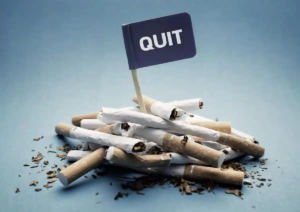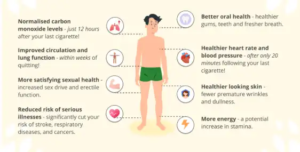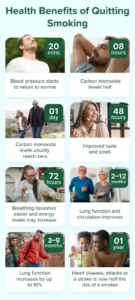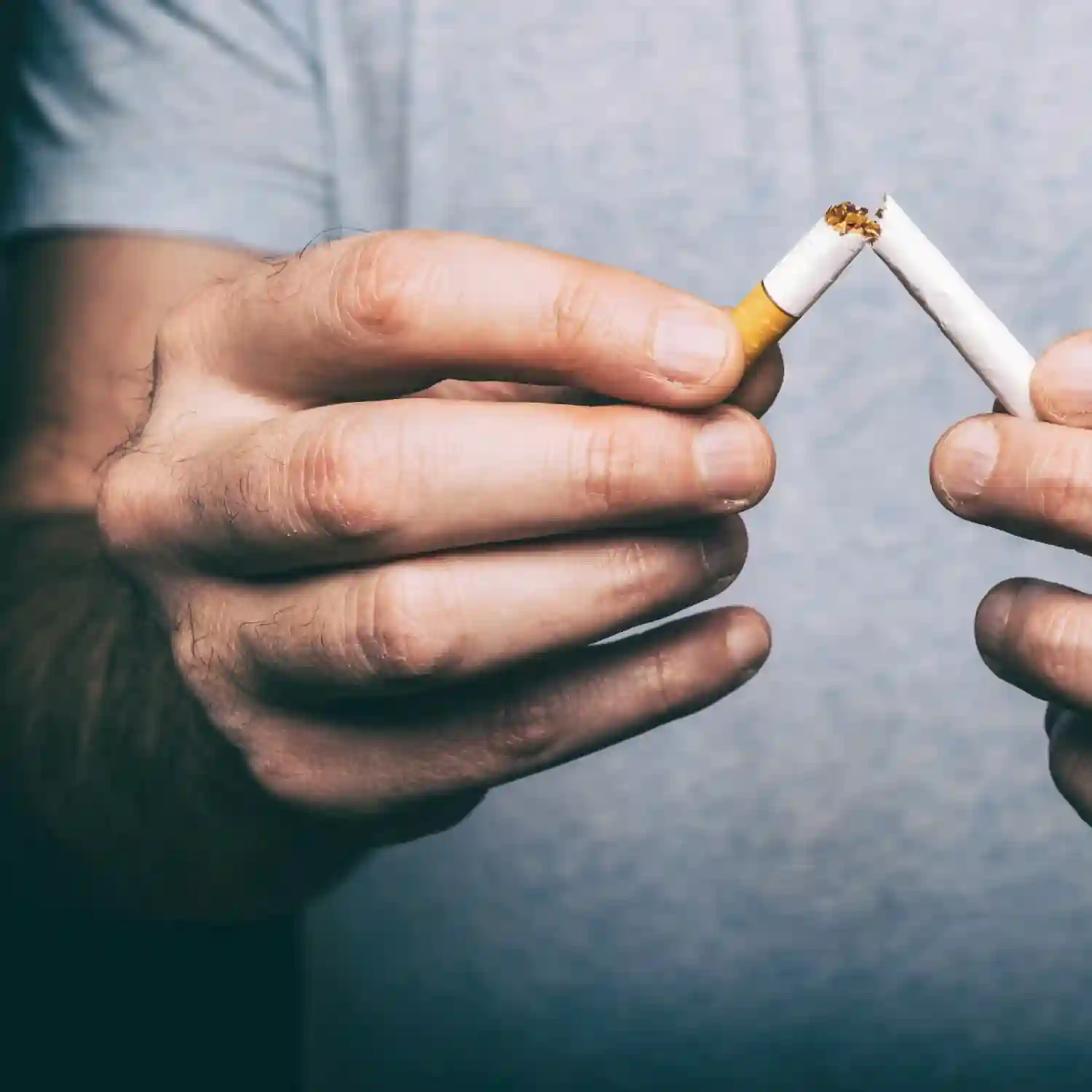
Smoking remains one of the most widespread health risks today. Whether you smoke cigarettes, vape, or use other forms of tobacco use, you're exposing yourself to harmful chemicals and risking serious illness. This guide unpacks everything you need to know—from why quitting is the best decision, to exactly what happens when you quit, and how to build a powerful quit plan that helps you quit smoking for good. Plus, discover how our Extreme Anti‑Smoking System provides effective support, in simple, easy‑to‑understand steps.
Why You Should Quit Smoking Right Now
Smoke Contains Thousands of Chemicals
Every cigarette you light introduces over thousands of chemicals into your body—many of them carcinogenic. These substances damage your lung tissue and circulate via your bloodstream, increasing your risk of cancer and heart disease.
Smoking or Vaping? Still Harmful
Even if you’re vaping nicotine, you're not avoiding risk. Although sometimes marketed as safer, vaping and e-cigarettes still expose you to nicotine, and recent studies suggest they can harm your lungs and increase the risk of infection.
Health Effects Are Wide-Ranging
Smoking doesn’t just cause lung cancer it affects nearly every organ. The Centers for Disease Control and Prevention, the Office on Smoking and Health, and the US Department of Health link tobacco use to cancer of the mouth, stroke, dying from lung cancer, and much more.
Health Benefits of Quitting Smoking: Immediate to Long-Term Gains

When you stop smoking, your body begins to recover right away. Let’s explore the timeline of what happens when you quit.
Days After Quitting – Carbon Monoxide Normalizes
Within the first day, your carbon monoxide level in blood goes back to normal level, improving oxygen flow to your lungs and supporting better health.
First Week – Nicotine Withdrawal & Craving
Nicotine withdrawal and withdrawal symptoms such as craving, irritability, and headaches often peak between 2–5 days after quitting—a rough but normal part of healing.
Within Three Months – Lung Function Improves
By around three months after quitting, your lung function and shortness of breath decrease notably. Bronchial tubes start to rebuild, reducing cough and excess mucus.
3–9 Months – Respiratory Repair
Between 3‑9 months, cilia (tiny lung hair-like structures) regenerate, which reduces infections and helps clear mucus.
Year of Not Smoking – Major Heart Risk Reduction
After your first year of not smoking, your risk of coronary heart disease drops roughly by half compared to someone who continues smoking.
Many Years Later – Cancer Risk Drops Dramatically
If you stay quit for 5 to 15 years, your risk of lung cancer becomes similar to someone who does not smoke. The sooner you quit, the greater the health benefits of quitting smoking.
Creating a Strong Quit Plan
A quit plan helps structure your journey:
Choose a Quit Day
Pick a date soon ideally within two weeks to stop smoking. Treat that date like a milestone toward better health.
Understand Your Nicotine Addiction
Nicotine creates dependence through changes in your brain, which leads to craving and nicotine withdrawal when you quit.
Tools for Smoking Cessation
- Quitline support
- Nicotine replacement therapy (gum, lozenges, patches)
- Prescription aids like bupropion or varenicline
- Behavioral therapy programs
These options increase your chances of quitting for good.
Withdrawal Symptoms: What to Expect and How to Cope
Physical Symptoms
- Craving nicotine
- Headaches
- Insomnia
- Increased appetite
Emotional Symptoms
- Anxiety or depression
- Irritability
- Difficulty concentrating
Coping Strategies
- Drink water
- Chew sugar-free gum or a lozenge
- Practice deep breathing or relaxation
- Use your quit plan and reach out for help
Boosting Health Benefits of Quitting Smoking
Blood Pressure Starts to Drop
Within hours, your blood pressure and heart rate improve, lessening the risk of heart disease and stroke.
Better Breath and Oral Health
Your voice box and throat feel relieved as coughing and throat irritation subside. Risks related to cancer of the mouth drop over time.
Improved Physical Performance
You’ll notice better stamina and less shortness of breath whether walking, exercising, or climbing stairs.
The Role of Better Health in Staying Quit
Maintaining a smoke-free life includes:
- Being aware of triggers, especially after your last cigarette
- Celebrating milestones like year of not smoking
- Recognizing that health benefits of quitting smoking continue to grow year after year
Health Benefits of Quitting Smoking Support

In addition to physical gains, quitting provides:
- Increased energy and clearer thinking
- Improved mood and emotional well-being
- Financial savings from no longer buying cigarettes
- Better sense of taste and smell as nerve endings start regenerating
Tobacco Use vs. Smoking or Vaping Alternatives
Risks of Vaping Nicotine
Although vaping nicotine may seem safer, it maintains your nicotine addiction and introduces unknown health effects.
Cessation Means No More Tobacco Products
Committing to smoking cessation means avoiding all forms of tobacco use, whether smoked or vaped.
Health Benefits Are Personal—People Who Quit Smoking Report:
- Reduced risk of developing lung cancer
- Lower chances of heart disease and stroke
- Fewer respiratory infections and symptoms
- Enhanced health outcomes well beyond just one year
Empowering Resources You Can Trust
Visit this excellent blog from Smokefree.gov (part of the National Cancer Institute) to help you quit smoking with real advice clinically validated and free from sales pitches: Smokefree.gov blog.
Maintaining Momentum Tips to Help You Stay Smoke-Free
Daily Reminders of Progress
- Track your smoke-free months of quitting
- Celebrate reaching 3‑month, 9‑month, and one-year markers
Old Habits, New Paths
Replace rituals like post-meal smoking with new routines like walking or calling a friend.
Never Too Late to Quit
Even after smoking for many years, quitting still decreases your risk of dying early. The sooner you quit, the more health benefits you gain.
Why Extreme Anti-Smoking System Helps
Our system goes beyond patches and pills:
- Provides step-by-step guidance from your first quit attempt
- Addresses real-world triggers and emotional challenges
- Helps you stay quit, not just quit
Long-Term Health Benefits of Quitting Smoking
Your long-term commitment leads to:
- A halved risk of lung cancer and heart disease
- A return to normal lung function over time
- Lowered risk of infections and improved immune health
- Sustained better health outcomes across decades
Final Summary: What Happens to Your Body When You Quit
Quitting leads to improved breathing, circulatory health, mental clarity, and lifelong wellness. Your lungs start a healing process that pays dividends for years. Every minute without cigarettes moves you closer to that smoke-free, vibrant version of yourself.
Take Action: Start Your Quit Plan Now
- Choose your quit day
- Download helpful tools and tips from our quitting smoking timeline
- Join our community at Extreme Anti-Smoking System
- Visit the Smokefree.gov blog for free, trusted support






